Catalogue > Search
Results for : Tout le catalogue

Driss Aroussi
Borj el mechkouk
Experimental doc. | mov | color | 32:20 | France | 2023
Taking the form of a fable-cinematography, Borj el mechkouk follows in the footsteps of a man sent by the village chief to observe and eventually un-sand a system of underground water galleries used by villagers to irrigate farmland. The story takes place in a pre-desert area of Morocco, where water management is a central element of oasis life. The system of underground drainage galleries is called “Khettara”. These man-made structures allow groundwater to be mobilized on a continuous basis. In this film, we follow the man on his journey through these vast, dry spaces. Once there, he settles in and applies his knowledge and dexterity to his work. In this charged and mysterious space, we discover the culmination of his mission. Commissioned by his oasis village, a man sets off into the desert to observe and eventually restore a system of underground water galleries known as Khettara. We follow his journey to Borj el mechkouk, where he works and lives for a time in this arid zone. What will he discover?
Born in Morocco in 1979, Aroussi lives and works in Marseille, France. Driss Aroussi's artistic work is polysemic, borrowing from several lines of research and navigating between experimentation and documentary form. In his practice, Driss Aroussi uses whatever enables him to reproduce reality, such as photography, or to capture it, such as video. In recent years, he has photographed construction sites, spending time with workers, sharing their daily lives, considering men, tools, objects and places. For him, reality also bears the mark of work, the stigma of its contradictions, the signs of the transformation it wrought on our reality.
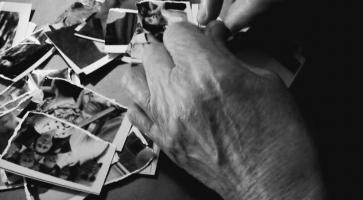

Fernando Arrocha
Piedad
Art vidéo | dv | color | 5:35 | Spain | 2005
Piedad faces the pass of time through the memories of the love story and execution of Milagros, her best friend.
Born in Valladolid in 1977, he studies Music and Fine Arts in Madrid. He works at the area of painting, installation, videoart and new technologies. From 2005, he co-manages Calipsofilms, a platform of audio-visual experimentation in several fields, such as videocreation, video clips, spots, documentaries, digital image, internet projects... He has taken part in individual and collective exhibitions, in different spaces, as Mirador (Madrid 2003), Photoespaña (Madrid 2005), Loop Festival (Barcelona 2007), Baluarte (Pamplona 2007). One of his most recent exhibitions is Líneas de mira (Lines of sight), at Centro Atlántico de Arte Moderno (Gran Canaria 2007). Fernando Arrocha investigates the diving of contemporary man in the incessant flow of images of all kinds in which he is submited. His work is based on image recreation and intervention, specially propaganda content in historical films and documents. That process of recreation and intervention invites to think about manipulation, not only technical but also political and sociological, as well as about the psychological derivations of such procedures.

Victor Arroyo
Disappearance in Three Acts | Act l
Experimental doc. | hdv | color | 15:0 | Canada | 2024
Disappearance in Three Acts | Act One is an ethnography of violence reflecting on a history of conflict in Central Mexico. The video piece posits a decolonial approach to the visual representation of violence in Mexico, transporting us beyond the realm of suffering into a space for quiet contemplation as the violent terrain of occupation enters the frame. Following the pictorial European Romantic landscape tradition with its depiction of the uncontrollable power of nature, this piece is an investigation on enforced disappearance in rural Mexico, reclaiming undermined histories of everyday violence and economic struggle. The video piece appropriates visual motifs from 18th century European Romantic landscape tradition with its depiction of the uncontrollable power of nature and cataclysmic extremes, echoing violent occupation of land in rural Mexico. Through a poignant testimony of a kidnapping survivor, intertwined with the pastoral rural landscapes of her captivity, the video documents geographies of disappearance at the threshold of detectability.
Victor Arroyo is a video artist working in the crossfield between cinema and contemporary art. His films are informed by various modes of listening and seeing, emerging from long periods of observation and documentation. His practice is situated at the intersection between aesthetics, knowledge production and community-based research, often concerned with the encounters and tensions between lived experiences, knowledge regimes and the politics of display. His work is regularly programmed in museums and festivals internationally, including Kasseler Dokfest, Sheffield Doc/Fest, RIDM, Canadian Centre for Architecture CCA, BIENALSUR, Cinemateca de Bogotá, Cinémathèque Québécoise, Cinémathèque Pacific, Museu de Arte Moderna do Rio de Janeiro, Museo Chileno de Arte Precolombino, Leonard & Bina Ellen Art Gallery, Center for Contemporary Arts Santa Fe, among others. Born in Mexico in 1977, and based in Montréal, Canada.
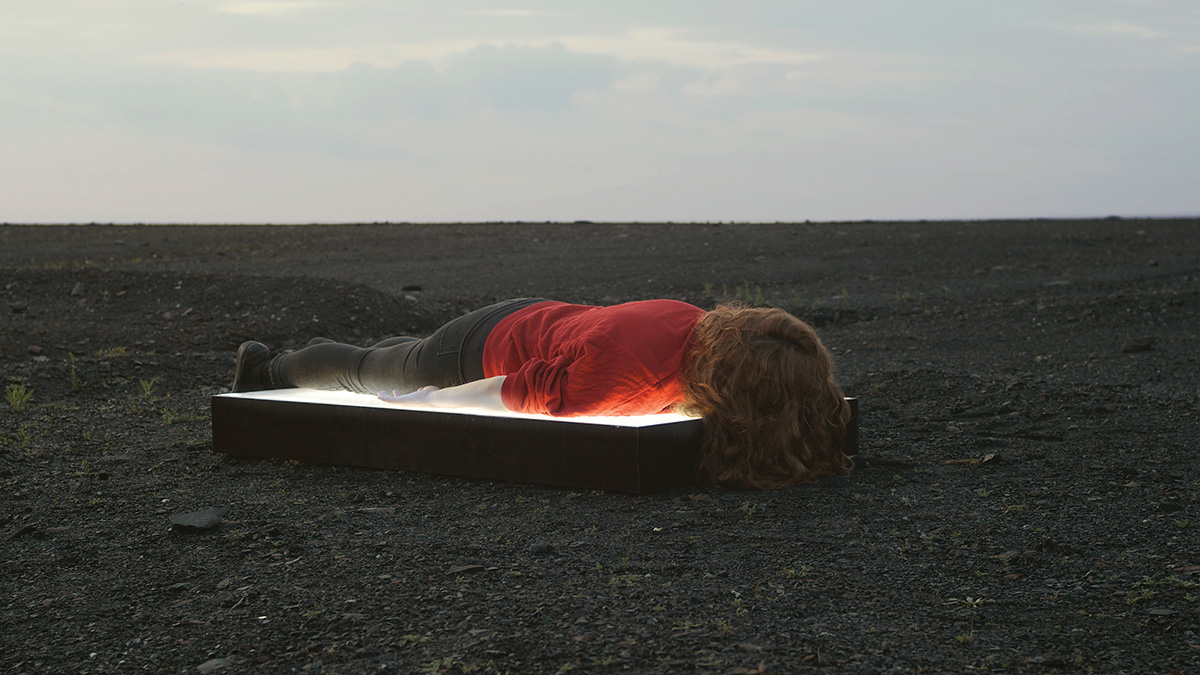
Jessica Arseneau
Aubes
Video | mov | color | 40:0 | Canada, Germany | 2021
Dawns takes us to a time when sleep is disrupted and insomnia becomes a collective condition. Captured before sunrise, with non-actors in a variety of outdoor environments, the multi-channel work consists of a series of continuous shots and long takes. The slow cinematographic images are reminiscent of tableau vivants where people, in groups or alone, find themselves in an urban environment or the transformed wasteland of a former industrial area. Exhaustion is conveyed by the bodies’ postures and their near immobility, composing at the same time an atmospheric landscape of fragility and endurance at the limit of the perceptible. While the videos look still images, they allow us to see the slow, luminous transition of night into day.
Jessica Arseneau (originally from Tilley Road, Canada) obtained a Bachelor of Fine Arts at Université de Moncton in 2011 and a Master’s Degree in New Media at the Academy of Fine Arts Leipzig in 2020, both completed with distinction. She received a grant from the Salzburg International Summer Academy of Fine Arts in 2017 and a scholarship from Saas-Fee Summer Institute of the Arts in 2021.?? Her solo exhibitions include Surrounding Uncaring Skies as part of the Festival International du Cinéma Francophone en Acadie, Moncton, Dawns, a storefront exhibition organized by Ringlokschuppen Ruhr, Mülheim an der Ruhr, The Screen Under My Eyelids at Helmut, Leipzig, Nothing but a Constant Glow at Spinnerei Archiv Massiv, Leipzig, and Lost Idyll, at Galerie d’art Louise-and-Reuben-Cohen, Moncton. ??Other public presentations of her work occurred at Galerie Sans Nom, Moncton, Struts Gallery, Sackville, Darling Foundry, Montreal, Maison de la Culture du Plateau-Mont-Royal, Montreal, BronxArtSpace, New York, Agora Collective, Berlin, Traverse Vidéo, Toulouse, Friche la Belle de Mai, Marseille, D21 Kunstraum, Leipzig, and a&o Kunsthalle, Leipzig.

Rebecca Jane Arthur
Barefoot Birthdays on Unbreakable Glass
Experimental film | 16mm | color | 18:20 | Belgium | 2023
In Barefoot Birthdays on Unbreakable Glass, three women reflect on art creation, immigration, and their own mother-daughter relationships: relationships cut short, relationships evolving, relationships to treasure. Following insights of independent experiences of love and loss, they unite in one space to celebrate a new chapter of life and friendship.
Rebecca Jane Arthur (b.1984, Edinburgh) is a visual artist working predominantly with the moving image and text. Her works often transpire as experimental film portraits of people and places, and her interest lies in how personal stories depict a socio-political context and history, giving particular attention to class politics, education and women’s experiences. She is co-founder of the Brussels-based, artist-run production and distribution platform elephy, contributor to the online film criticism platform Sabzian, and a PhD in the Arts candidate at KASK & Conservatorium/School of Arts Ghent where she teaches in the visual arts department and lectures on art and feminist theory.

Rebecca Jane Arthur
Liberty: an ephemeral statute
Experimental doc. | super8 | color | 37:0 | United Kingdom, Belgium | 2020
Stemming from a personal account of a search for liberation set in the US during the early 70s, 'Liberty: an ephemeral statute' reflects upon post-68 desires for emancipation, emigration, and education through an impressionistic memoir and portrait of the filmmaker’s mother back home in Scotland today.
Rebecca Jane Arthur (born 1984 in Edinburgh) is a visual artist whose practice is mainly related to moving images and writing. She studied Fine Arts at Sint-Lukas Brussels and at the Academy of Fine Arts in Vienna and obtained her MFA at the Royal Academy of Fine Arts (KASK) in Ghent in 2017. At the invitation of Ingrid Cogne, Rebecca Jane Arthur worked as a researcher for Six-Formats (funded by FWF-Peek), an arts-based research project hosted by the Vienna Academy of Fine Arts, in the Screening format in 2017-18. In 2019-20, she developed her writing work within the Conversation #4 residency programme, an initiative of the Centre Vidéo de Bruxelles (CVB) and GSARA, in partnership with the Beursschouwburg, and she also participated in SoundImageCulture (SIC). She was artist-in-residence at WIELS, Brussels, in 2019 and will be resident at the Cité internationale des arts de Paris in 2021. Parallel to her artistic activities, Arthur works in Brussels at Auguste Orts as coordinator of the project On & For Production and Distribution (2018-2021). She is also the co-founder of Elephy, a production platform based in Brussels.


Mali Arun
MUTATIS
VR 360 video | mp4 | color | 12:0 | France | 2019
The VR film “Mutatis” by French artist Mali Arun explores a diffuse frontier between scientific and mythological pictures of organic and human landscapes. At night, strange men in white suits enter a botanical garden. Nature is abundant and fascinating. The site guard takes this group to the water lily pond. A young woman’s inanimate body is found there. The garden hides other bodies, buried, sunk in the deep flora. Then a strange light appears from the women’s bodies.
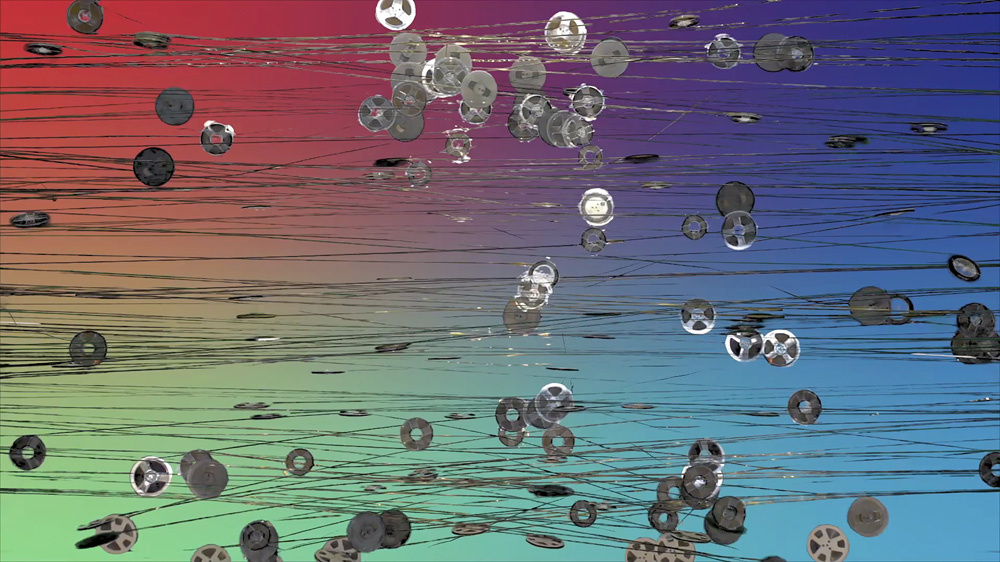
Miguel Arzabe
Reel Roll
Video | hdv | color | 3:46 | USA | 2016
Discarded audio reels unfurl and weave together against a digital backdrop. A narrator tells the story of a Navajo boy who learns to weave from his grandmother.
Miguel Arzabe is a San Francisco-based visual artist who works across media, including painting, video, and paper weaving. Arzabe`s work has been featured in such festivals as Hors Pistes (Centre Pompidou, Paris) and the Festival du Nouveau Cinéma (Montreal); and in museums and galleries including RM Projects (Auckland), FIFI Projects (Mexico City), Marylhurst University (Oregon), Berkeley Art Museum, Albuquerque Museum of Art, the de Young Museum, and the San Francisco Museum of Modern Art. He has held many residencies including Headlands Center for the Arts, Montalvo Arts Center, and Santa Fe Art Institute. His work is included in the permanent collections of Facebook, YouTube, and the San Francisco Arts Commission, among others. He holds a BS from Carnegie Mellon University, an MS from Arizona State University, and an MFA from UC Berkeley.
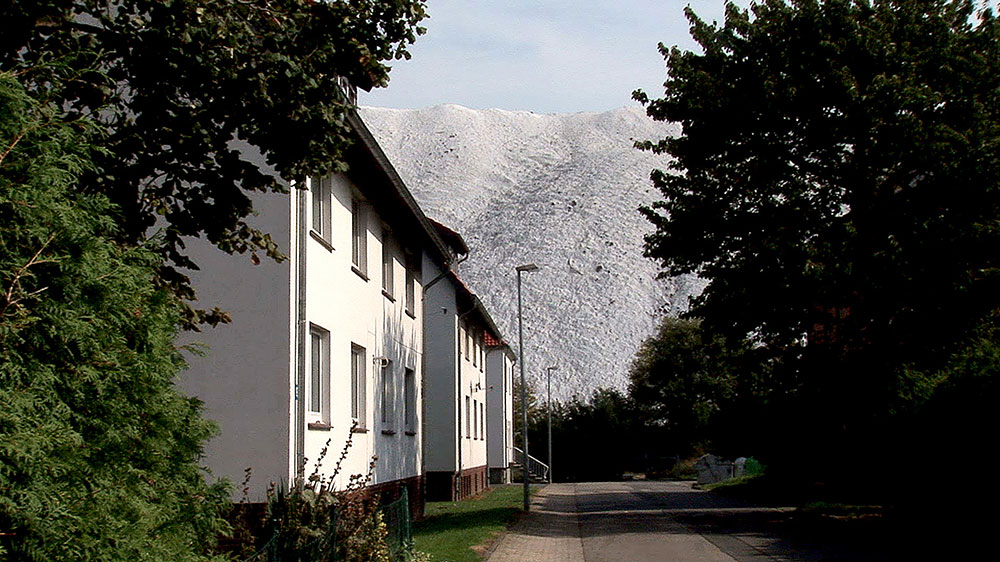
Carsten Aschmann
Stardust
Experimental doc. | hdv | color | 14:0 | Germany | 2018
In a few billion years, the sun goes down. Time enough to leave the inhospitable places of the earth. The flight ends with a crash in Paradise, which has been provide with a decay data by the manufacturer. The search of an angel produces a lot of stardust.
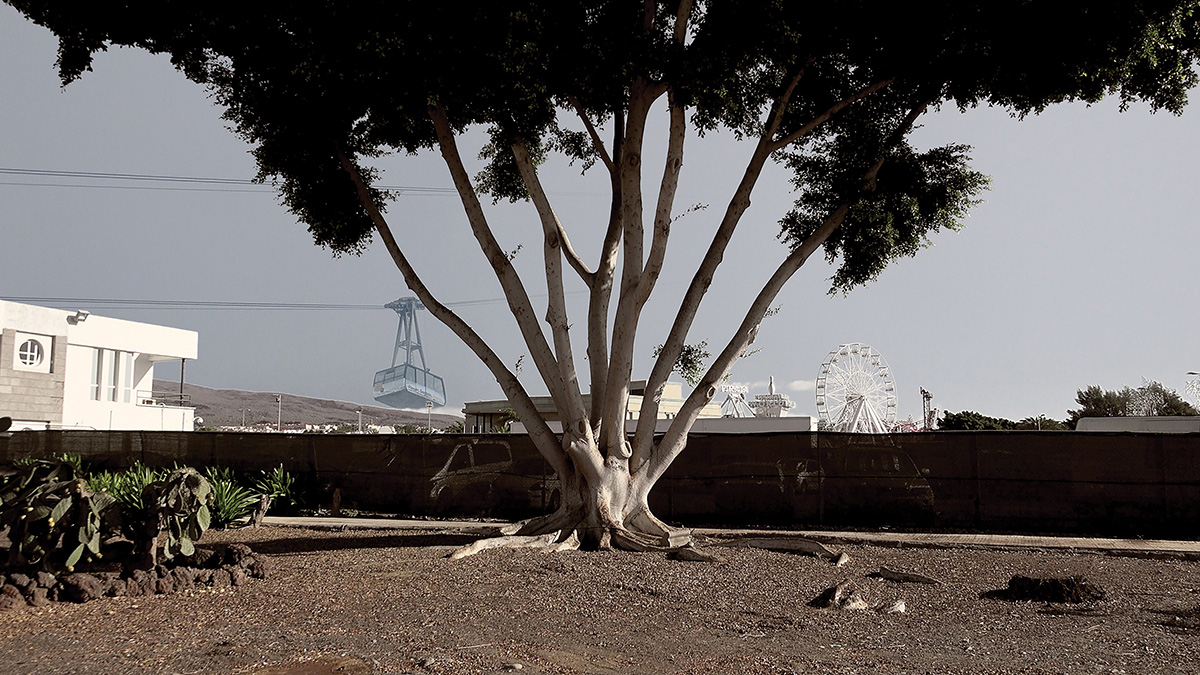

Carsten Aschmann
Sonnenland Nr. 62
Experimental film | 4k | color | 23:50 | Germany | 2022
Landing approach to an island. The camera observes and traverses public space, on foot and in the air. Shots from the past and future intersect the vacation images. While filmmaker Aschmann speaks unadorned about his difficulty in finishing a film, we hear voice messages left by a colleague, eloquent and satirically pointed - on the subject of film and their ambitions. In a dune landscape, naked people stand and wait for their fortune.
Carsten Aschmann is a freelance filmmaker, producer, editor and curator of film series, for festivals and seminars. From 1993 - 97 he set up the film workshop Sector 16. In 2003 he created the label "Hula-Offline". Since 2006 also producer for documentaries and active as scriptwriter. He lives and works in Hanover. Studied philosophy and German language and literature, 1987 - 1988 Studied fine arts at the HBK-Braunschweig film class, 1989 - 1996 Master student of the film class with Prof. Birgit Hein

Carsten Aschmann
GAS AVALON
Experimental fiction | hdv | color | 14:0 | Germany | 2011
Penetrating an interactive surface, we encounter the world of Gas Avalon, where completely different rules apply. Bullets serve as forms of locomotion; artistic genres depict a landscape of placelessness. Man and art transcend to vapor in a power station. As atoms of a soul that has the gift of reason, we return to reality.
Carsten Aschmann lives and works in Hannover. He has studied experimental-film at the hbk-braunschweig in the filmclass by büttenbender and birgit hein. The last years he worked a lot as an editor and producer for documentary projects by hula-offline. Mainly he is a filmmaker, and a screenwriter. His films are screening worldwide.


Carsten Aschmann
Ketamin - Hinter dem Licht Video Tagebuch IV
Experimental doc. | dv | color | 20:38 | Germany | 2009
"What kind of road that i choosen?" asking a voice. "Our Earth is beautiful" reply an old man from the void. Ahead the sunset two boys playing frisbee. places and elements alternate. Through long and winding tunnels we had a trip to venice that seem to be outspent and empty. Gondoliers swinging their helm, meanwhile time is passes by. "Ketamin" is a film about sounds, beauteousness, Art and Life without wrong comforts and bluff on their imminence.
Vita Carsten Aschmann Filmmaker aka Hula-Offline (Department for Film, Video & Art) 1996 Meisterschüler Filmclass HBK-Braunschweig/Germany by Birgit Hein & Gerhard Büttenbender carsten aschmann lives and works in hannover. he is study experimental-film at the hbk-braunschweig in the filmclass by büttenbender and birgit hein. the last years he worked a lot as an editor and producer for documnetary projects by hula-offline for documentary project. at last with agnieszka jurek for "does that hurt you?" a mystery feature about & with david lynch. Mainly he is a filmmaker, and a screenwriter. his films are screening worldwide. Festivals worldwide among other things: Berlin Montreal Kelibia St.Petersburg Arnhem Breslau Krakau Edinburgh Glasgow Manchester Rotterdam Valencia Utrecht Lissabon Mexico-City Oberhausen Osnabrück HongKong Paris Bangalore Basel Madrid New York Kyoto New York
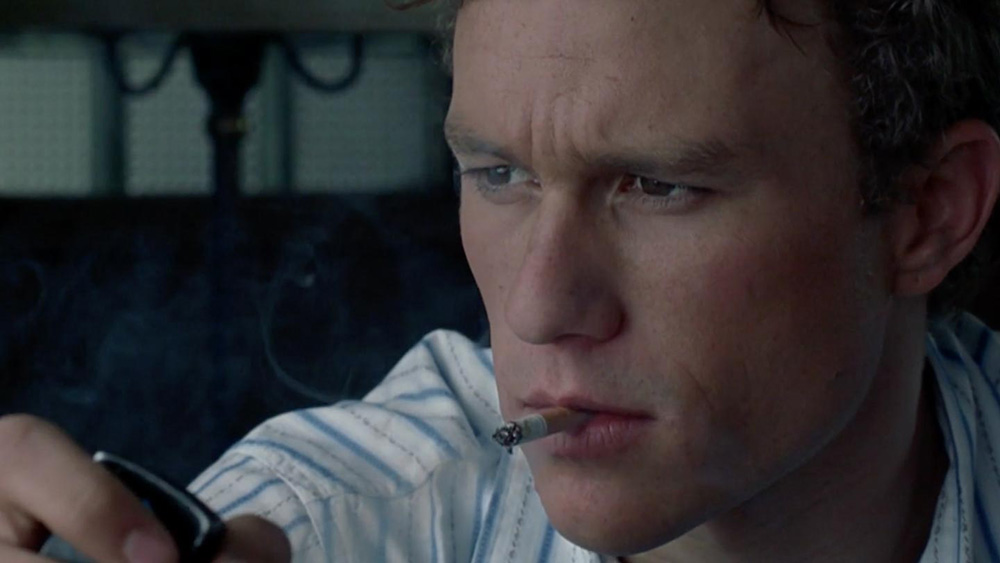
Carsten Aschmann
Updating Death
Experimental film | 4k | color | 14:30 | Germany | 2017
The actors Ledger, Walker & Hoffman try to establish contact with each other. In a volatile state between mind and consistent figure, they navigate—at once helpless and aggressive—through the that can no longer be changed.the actors Ledger, Walker & Hoffman try to establish contact with each other. In a volatile state between mind and consistent figure, they navigate “at once helpless and aggressive” through the that can no longer be changed.
carsten aschmann lives and works in hannover. he has studied at the hbk-braunschweig in the filmclass by büttenbender and birgit hein. Mainly he is a filmmaker, and a screenwriter. more info www.hula-offline.de
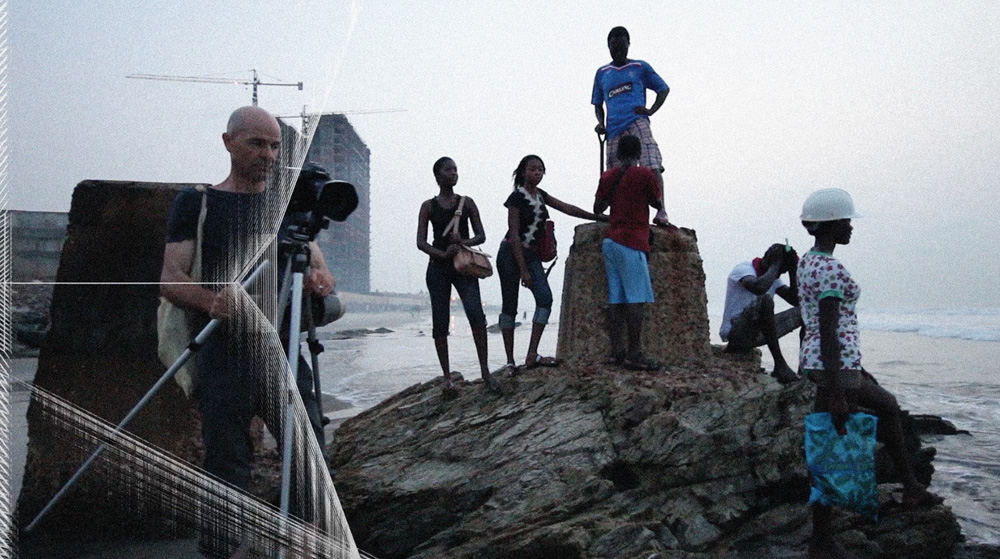
Daniel / Conny Aschwanden / Zenk, Zenk Conny
LABADI RISING
Experimental doc. | hdv | color | 3:33 | Austria, Ghana | 2014
Labadi Rising an urban sprawl, a gigantic, close-knit urban conglomerate along the westafrican coast from Abidjan to Lagos? The prediction of urbanist Mike Davis ( planet of slums) for 2050 could easily become reality long before. Labadi, located at the periphery of Accra where the city just merges with neigbouring portcity Tema is fitting exactly into this scheme. Thats where Daniel Aschwanden, Conny Zenk und Mat Hurtl meet the performancegroup GOLOCAL around visual artist Serge Attukwei Clottey, all of them inhabitants of Labadi. They demonstrate a new african self-consciousness through their way of trashy posing and improvise in public space along the beach. "The digital gaze belongs to all!" they seem to say, looking back through the displays of their gadgets, creating their own images. They stand for many young Africans facing the challenges of everyday life: poverty, violence , environmental pollution, rivalry, corruption and exploitation through global capital and own elites. The collage as a principle of life, seemingly omnipresent tool to appropriate symbolic and real territories serves as a matrix also for the videoshooting. The big themes are to be found in microspaces and depict themselves in surprizing transitions; locations, things, humans, actions, smells, realities, sounds, continuously measured, built-in, destroyed, rearranged and applied again, the construction of a future.
Daniel Aschwanden is experimenting with transdisciplinary methods in urban contexts departing from body related agendas applying a choreographic gaze to urban surroundings. His works articulate themselves in a wide range of formats reaching from interventions in public spaces to installations and performances in Gallery spaces and theatres and relating social with art agendas. Lecturer at the university of applied arts Vienna, since 2013 at the social design studio. Collaborations with media artist Conny Zenk since 2009. Urban seed, urban performative installation Vienna , PARCOURS I-IV 2010-13 urban performances Vienna, Path of money Beijing, Berlin,Vienna, system_m, Bastard crowding,urban media performance Accra, Beijing, Vienna, SUPERSUIT Vienna Conny Zenk is media artist with the focus on generative video art, installation and performance. she explores hybrid contexts between projection, digital gadgets, bodies and urban environments. Active as a live visual improviser she works chiefly with software that allows her to investigate digital processes and to translate them into videos of abstract landscapes. collaboration with Daniel Aschwanden since 2009. WEAVE (Installation), urban seed (Performance), scope (visual Live Performance), Art of Reading Maps (Urban Performance), Bastard crowding (Workshops and Performances)


Knut Asdam
Abyss
Experimental fiction | 35mm | color | 43:0 | Norway, Myanmar | 2010
Abyss portrays an urban reality characterised by migration and change ? the movement of people, the movement of money and power, and the drift of the imagination. Filmed in East London, including the 2012 Olympic construction site the film is set within spaces of the modern city ? markets, gyms, parking lots, parks, squares, streets and stores. The main character, O, negotiates her material world but the city?s economical, political and social demands appear to have been absorbed into her movements, speech and psychology. The film drifts between a material world and its psychological effects.
Knut Åsdam was born in Trondheim (1968). He currently lives and works in Oslo. Åsdam established his international work as an artist through the New York context where he lived from 94-04 and attended the Whitney Museum Independent Study Program, NYC (94-95). Previously he studied at the Jan van Eyck Akademie (92-94), Goldsmiths College, London (89-92) and Wimbledon School of Art, London (88-89) after preparatory studies in Psychology, Philosophy and Linguistics at the University of Oslo and Maui Community College, University of Hawaii (86-89). Though expressed in very diverse forms, the main interest of Åsdam?s work remains a consistent concern for the manner in which each individual constructs and negotiates his or her identity in relation to the change and organizations of contemporary society. This sensitivity to the instability of the self often expands on the merits of queer theory and feminism, as well as psychology of language and (lacanian) psychoanalysis. His investigation of the relationship between language, the body and the usage and perception of public urban spaces, includes a look at structures of political power and authority, and has taken the diverse form of audio, film, video, photography and installation. The themes in Åsdam?s work can be seen through four categories; ?Speech?, ?Living?, ?Sexualities? and ?Struggle?. These concerns are often related to themes of deviation or crisis and to analysis of space in terms of desire, usage and history. The idiosyncracy of Åsdam?s approach to the cinematic field is created by transposing the resources of the discussions of place and subjectivity and the keen attention to the politics of language from the Fine Arts context into film. Åsdam has been active with exhibitions, publications and broadcast internationally for the last 15 years at i.e. Tate Britain and Tate Modern, London; Venice Biennial; Künsthalle Bern; Istanbul Biennial; Bergen Kunsthall; MACRO, Rome; The Astrup Fearnley Museum, Oslo; Manifesta7; Moderna Museet, Stockholm; P.S.1 MOMA, NYC; FRAC Bourgogne, Dijon and Musee d?Art Moderne de la Ville de Paris, among others.
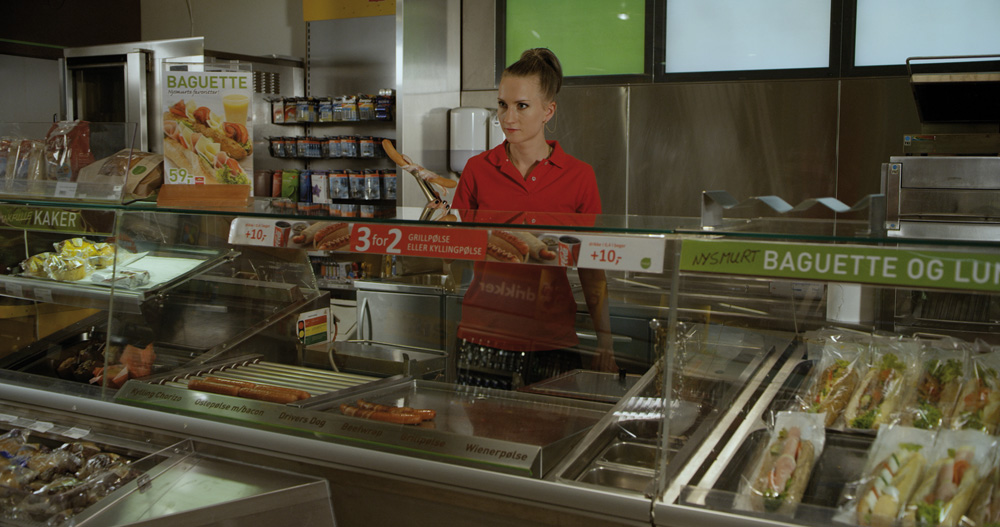
Knut Asdam
EGRESS
Experimental fiction | hdv | color | 41:0 | Norway | 2013
Egress is a narrative set in a gas station in the edgelands of Oslo. The main characters work at the bottom of the oil company hierarchy and are engulfed in the everyday and the dark economic and psychological shadows of their society. Egress is the story of a young woman who deals with her every day work situation with independence and stubbornness in her work and life in the periphery of the city. The film shows relationships between control and independence, about labour, class and work, but it is also a poetic film about a socially insecure edgeland of the city—and about a psychological flipside or cost of the everyday, somewhere near the bottom of the huge economic ladder of the oil industry which secures Norway's stability. Egress' world is a world of social instability and economic insecurity as part of a society undergoing major changes. Egress is shot entirely on "location" in Oslo's Groruddalen, mainly between an apartment complex and a gas station. The film is an experimental fiction built up from documentary material which mixes the environment- and character-based to talk about contemporary society.
Knut Åsdam (1968) is a filmmaker, installation artist and photographer. Åsdam established his international work through the art scene in New York after finishing studies at Wimbledon School of Art (London, 88-89), Goldsmiths College (London, 89-92), Jan van Eyck Akademie (Maastricht, 92-94) and at the Whitney Museum Independent Study Program (NYC 94-95). Expressed in diverse forms, the main interest of Åsdam’s work remains a concern for contemporary society and its psychological and material effects, and the toll of every day life; e.g. how individuals constructs and negotiates his or her identity in reaction to the rules and organizations of contemporary society. Åsdam investigates the usage and perception of public urban spaces, including their structures of political power and authority. The themes in Åsdam’s work can be thought of relating to four essential categories; ‘Speech’, ‘Living’, ‘Sexualities’ and ‘Struggle’. These concerns often relate to themes of dissidence and to analysis of space in terms of desire, usage and history. The idiosyncrasy of Åsdam’s approach to the cinematic field is created by transposing the resources of spatial and place-oriented discourses from the Fine Arts context into film. Furthermore, he uses a plotless narrative and an oscillation between documentary and fictional narrative elements in the films. Åsdam´s work has been shown widely at i.e. Tate Modern; Bergen Kunsthall; Tate Britain; Boijmans van Beuningen Museum, Rotterdam; Venice Biennial; Kunsthalle Bern; Istanbul Biennial; FRAC Bourgogne; MACRO, Rome; Museum of Contemporary Art, Oslo; Manifesta7; Moderna Museet, Stockholm; P.S.1 MOMA, NYC: and Musee d’Art Moderne de la Ville de Paris, among others.
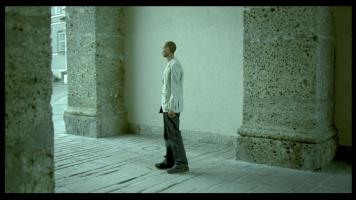

Knut Asdam
Finally
Experimental video | dv | color | 18:0 | Norway, France | 2007
Finally deals with questions or affects of history and violence, and explores the boundaries between narrative film and the discussion of place and history. The film is shot within a historic setting in Salzburg, Austria. The three main characters in Finally fight violently and repeatedly in the film, but there is not much in the narrative that seems to trigger it. It seems rather to be the reaction to, or even demand of, a place in manners that are both historic and contemporary. The films works in a play between spatial and architectural placement and manner of language at use between the protagonists, rather than linear story.
Knut Åsdam lives and works in New York, Paris and Berlin. He has been active internationally for the last 10 years with exhibitions, publications and broadcast. He has exhibited widely at amongst others, Tate Britain, Venice Biennial, Museum of Contemporary Art, Moderna Museet, PS1 and Musee d?Art Moderne de la Ville de Paris. Feature articles on his work have been published in Artforum, Grey Room, Untitled Magazine and many more. In a strongly visual and spatial manner, whith emphasis on the experience of the viewer, Åsdam utilizes sound, film, video, photography and architecture to work with the politics of space and the boundaries of subjectivity. Often these concerns are related to themes of dissidence and an analysis of space in terms of desire, usage and history. Four categories are essential to Åsdam?s work: ?Speech?, ?Living?, ?Sexualities? and ?Struggle?: Speech: Throughout Knut Åsdam?s video, film and radio work he has been interested in how subjectivity is formed through speech acts ? either through actual speech or through other forms of self-articulation ? like clothes, behavior and routines. Viewing speech as performative, he has particularly been interested in how things have to be repeated, inscribed or reinscribed with meaning to appear stable: whether that is your body or your street. In many of his works, there is a struggle of balance between the affirmative speech ? that seeks to affirm a subject, and depressed speech ? that seeks to dissolve the subject. Living: Åsdam is interested in architecture, place and social dynamics, not as formal exercises but rather as aspects that relates to an everyday ? in which life takes place. As with the issue of ?speech?, Åsdam is here also interested in the performative ? the degree to which something?s meaning has to be repeated also opens for possibilities for change or disturbance. In Åsdam?s work there is a strong interest for the interplay of fantasy and narrative to that of lived experience and economic and political. ?Sexualities?: The plurality of sexual and gendered experience is at the root of the way Åsdam construct characters. The subjects in his work are always assumed as gendered and sexualized subjects. On the one hand, he is involved in the every day contestations of sexuality or gender ? as it might relate to your body or to urban spaces. On the other hand, he is looks at how a desiring subject is at the base of creating both the open public spaces and the enclosed or suppressed spaces in society. ?Struggle?: Perhaps the glue that binds the other categories together, ?struggle? is important to Åsdam not only in a political sense, but also as a way of understanding how ?speech? (subject formation), ?living? (the meaning of the everyday) and ?sexualities? (the meaning of our bodies) are things we have to affirm or contest in our everyday life and that it involves both psychological and social processes. In the 21 min award-winning film, Filter City, Knut Åsdam relates the interconnectedness and relationship between two women and the urban spaces that they inhabit and use. Through a series of carefully poised and visually striking scenes that move in a slow deep pace, the relationship between the women develops through placement and through their different use of language ? where in fact they are talking to, yet past eachother. The urban spaces that they use are both ?theirs? to use, but also out of their economic and social control. In relation to their surrounding and in relation to eachother, one character attempts but fails in adopting a searching and affirmative use of language, while the other mainly uses a depressed speech as a social medium to control her relationship. In the installation Psychasthenia: the Care of the Self,1999, Åsdam creates a nighttime park inside a glass pavilion with a dark light filter. The dark reflective glass structure reveals on the inside a dark lush interior in an architecture of trees, plants, grass and flowers, with only minimal warm light. Here Åsdam picks up the night time park of the city, the temporary space for teenage hangouts, drug trafficking, sexual cruising ? a space that as much as it represents a temporary space of release, is also part of the very mythology and narrative of the city. In the slides installation, Psychasthenia 10 series 2, we are confronted with night time photographs of apartment bulidings in different western cities. The starkly beautiful images are in a symbiosis through the low light levels and colours that intermix the background and the foreground in the images. The buildings ?all from between 1959 and 1992 do not have clear indicators of their economic or class relations but we are left to look at them from our own projections of experience, fantasy or even prejudice. The traits of wear on a building outside its context are left for us to interpret in relation to our own experience and ideas or narrative of the city.
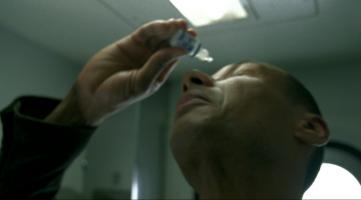

Knut Asdam
Oblique
Experimental film | 35mm | color | 13:0 | Norway | 2008
UUrban environments, and their heterogeneous sites, are locations for Knut Asdam`s investigations into social design, patterns of behavior and modes of subjectivity, with a particular focus on spatial identity disorder and pathologies. Asdam perceives a city as a machine of desire, its geography as a system of desire and its architecture as a generator for desiring practices. Usage and perception of public urban spaces, their structures of political power and authority occupy a central place in the artist`s studies of identities. ?Oblique?, which premiered for Manifesta 7, is a hybrid narrative of cinema and architecture which reveals public or semi-public spaces within a city, building up a labyrinthine setting within the gallery space. The film, ?Oblique?, is an articulation of identity in transition: the artist invites the spectator on a journey through on moving ?city? built up from cities and regions of diverse political, economic, cultural and social landscapes. The characters are travelling in a suspended generic space between the realities of the various places. Thus Asdam animates representational systems and orders of belonging that map cross-regional tensions where complex identity factors are negotiated, and express the struggle between a desire to find a place within the language and a necessity to adapt to social changes. Asdam narrates areas of intense psychological charge: newly built outer areas around the cities, construction sites, institutional and office buildings, transitory places, between growth and collapse, marked by quasi-contradictory processes of economic progress and development of slums, but at the same time, he constructs an objective critical space of political urgency. Åsdam`s objective of developing a new kind of cinema is approached by using the resources of spatial and place-oriented discourse from the Fine Arts context as a strategy within the film.
Born 28 of August 1968 in Trondheim, Norway. Lives in Oslo Knut Åsdam has been active internationally more than 10 years with exhibitions, publications and broadcast. He has exhibited widely at amongst others, Tate Britain, Venice Biennial, Kunsthalle Bern, Istanbul Biennial, Museum of Contemporary Art, Moderna Museet, PS1 and Musee d?Art Moderne de la Ville de Paris. Feature articles on his work have been published in Artforum, Grey Room, Le Monde Diplomatique, Untitled Magazine and many more. In a strongly visual and spatial manner, with emphasis on the experience of the viewer, Åsdam utilizes sound, film, video, photography and architecture to work with the politics of space and the boundaries of subjectivity. Often these concerns are related to themes of dissidence and an analysis of space in terms of desire, usage and history. Four categories are essential to Åsdam?s work: ?Speech?, ?Living?, ?Sexualities? and ?Struggle?.


Knut Asdam
Tripoli
Experimental fiction | 0 | color | 24:0 | Norway | 2010
In Tripoli, North Lebanon, are the remains of one of the world?s most distinctive building projects: an international expo center, designed by Brazilian architect Oscar Niemeyer in 1966 and abandoned at the outbreak of civil war in 1975. In a form moving between architectural documentary and an incoherent theatrical narrative, the film both describes the place and an undercurrent of the violent history that has set the site in a state of incompleteness and decay. The modernist ruins appear out of joint, and function as a monument to a now distant optimism in the Middle East.
Knut Åsdam was born in Trondheim (1968). He currently lives and works in Oslo. Åsdam established his international work as an artist through the New York context where he lived from 94-04 and attended the Whitney Museum Independent Study Program, NYC (94-95). Previously he studied at the Jan van Eyck Akademie (92-94), Goldsmiths College, London (89-92) and Wimbledon School of Art, London (88-89) after preparatory studies in Psychology, Philosophy and Linguistics at the University of Oslo and Maui Community College, University of Hawaii (86-89). Though expressed in very diverse forms, the main interest of Åsdam?s work remains a consistent concern for the manner in which each individual constructs and negotiates his or her identity in relation to the change and organizations of contemporary society. This sensitivity to the instability of the self often expands on the merits of queer theory and feminism, as well as psychology of language and (lacanian) psychoanalysis. His investigation of the relationship between language, the body and the usage and perception of public urban spaces, includes a look at structures of political power and authority, and has taken the diverse form of audio, film, video, photography and installation. The themes in Åsdam?s work can be seen through four categories; ?Speech?, ?Living?, ?Sexualities? and ?Struggle?. These concerns are often related to themes of deviation or crisis and to analysis of space in terms of desire, usage and history. The idiosyncracy of Åsdam?s approach to the cinematic field is created by transposing the resources of the discussions of place and subjectivity and the keen attention to the politics of language from the Fine Arts context into film. Åsdam has been active with exhibitions, publications and broadcast internationally for the last 15 years at i.e. Tate Britain and Tate Modern, London; Venice Biennial; Künsthalle Bern; Istanbul Biennial; Bergen Kunsthall; MACRO, Rome; The Astrup Fearnley Museum, Oslo; Manifesta7; Moderna Museet, Stockholm; P.S.1 MOMA, NYC; FRAC Bourgogne, Dijon and Musee d?Art Moderne de la Ville de Paris, among others.
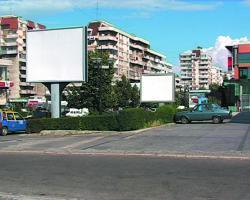

Mario Asef
revolution after revolution
Experimental doc. | dv | color | 14:0 | Argentina, Romania | 2006
The short film ?Revolution after Revolution? was shot in 3 Romanian cities (Sibiu, Pitesti, Bucarest). It draws on how media strategies are assimilated as well as integrated in society and therefore become part of every day life. The modern architecture of the 60s is the scenario in which inhabitants operate as actors. Ideologies of an utopical cerebration function as a donor of contents for forms, which are designed as a modern life´s model and allegorised as ?revolution?.
1971 born in Córdoba, Argentina. Lives in Berlin. Education: 1991 apprenticeship as graphic art designer in Córdoba, Argentina. 1990-95 University for Architecture and Urban Development in Córdoba, Argentina. 1998-2000 Academy of Visual Art, Karlsruhe, Germany. 2003 Chelsea College of Art and Design, London. 2000-2004 University of Art Berlin, Master of Art.

Leo Asemota
Count Off for Eo ipso: Replay Only Memory
Multimedia performance | hdv | color | 23:0 | Nigeria, United Kingdom | 2012